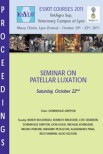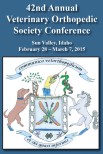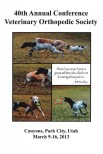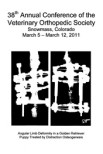OBJECTIVE: To compare the goniometric measurements of the stifle joint in seven dog breeds, and to determine the relationship among goniometric measurements, age, body weight, tibial plateau angle, crus and thigh circumferences, and widths of quadriceps, hamstring, and gastrocnemius muscles in healthy dogs.
METHODS: We used a total of 126 dogs from seven different breeds, and recorded the angle of the stifle joint at standing, extension, and flexion together with the range of motion (ROM). The circumferences of the thigh and crus were also measured. Mediolateral radiographic projections of the tibia and the femur were obtained from the dogs, and the tibial plateau angles, as well as the widths of quadriceps, hamstring, and gastrocnemius muscles, were measured from these images.
RESULTS: Neither the sex of the dog nor the differences in the side measured affected the goniometric measurements of the stifle joint. The standing, extension, flexion, and ROM angles were different among the breeds. The standard deviations of the standing and extension angles were small relative to their means, but the standard deviations of the flexion angle were large relative to their means in all breeds. Body weight and muscular measurements were the most influential factors on the stifle flexion angle and ROM.
CLINICAL SIGNIFICANCE: Breed differences, body weights, and muscle mass should be taken into consideration during assessment of the stifle function using goniometric measurements.









